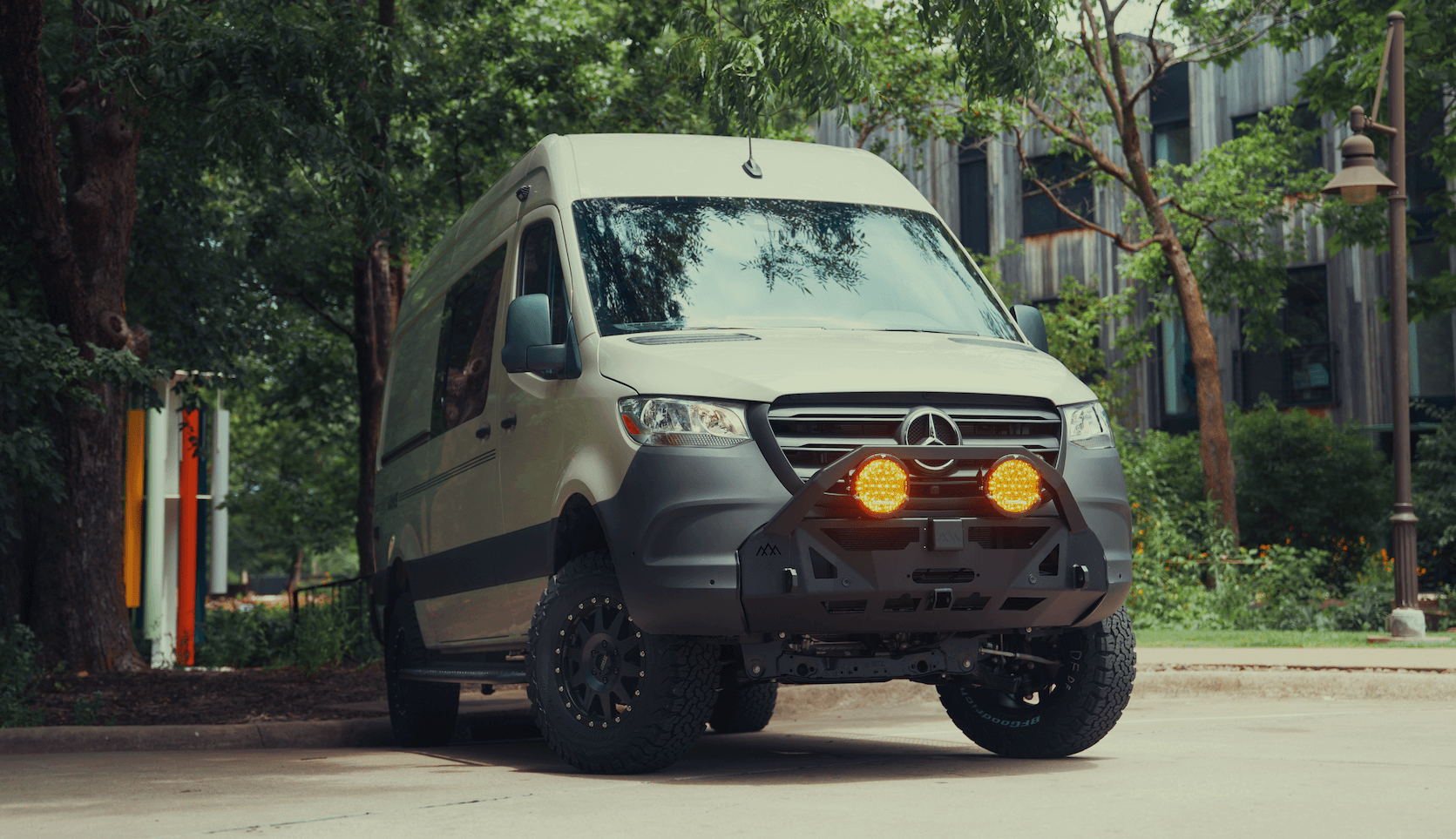Recreational Vans

An adventure van is a self contained travel rig built to carry people, gear, and essentials in varied weather while staying nimble on pavement and graded trails. Think of it as a mobile basecamp where the cabin doubles as your kitchen, bedroom, and storage locker. Unlike a large motorhome, the footprint stays compact for city parking, trailhead turnarounds, and ferry decks. Compared with a bare cargo van, the interior is finished for living with ventilation, insulation, and secure stow zones.
Common platforms include high roof full size vans such as Mercedes Sprinter, Ford Transit, and Ram ProMaster. Key distinctions are wheelbase length, roof height, driveline options like all wheel drive or selectable four wheel drive, and factory payload ratings. Clear goals drive the platform choice. Photographers might favor quiet interiors and large battery capacity. Climbers may prioritize racks, external storage, and water management. Riders who haul motos or mountain bikes lean toward durable floors and tie down points.
Inside, a strong adventure van balances comfort and function. Sleeping converts quickly. Gear storage remains accessible without unloading half the cabin. Ventilation and heat keep the interior livable across seasons. Power systems run fridges, fans, and devices without constant idling. The best builds work like a reliable tool you can grab at a moment’s notice.
Platform and layout
Insulation and climate
Electrical power
Water and galley
Sleep systems
Storage and tie downs
Tires, suspension, and clearance
Right sizing a battery bank starts with your daily loads. Fridge draw, fan hours, lights, and device charging often land between 50 to 120 amp hours per day. Aim for at least two days of autonomy without charging, then add solar and alternator charging to refill while you move. Ventilation is your first line of defense in heat. Pair roof fans with side window vents to create cross breeze. In the cold, a fuel fired heater warms quickly while using minimal battery power. Insulation should be paired with vapor management to reduce condensation behind panels.
Start with the non negotiables. If bikes live inside, protect rotors and drivetrain with padded mounts and keep weight low. If you carry skis, a sealed tube or rear locker keeps melted snow out of the cabin. For cooking, decide whether you prefer a permanent galley or a deployable outdoor setup. Use drawers and bins that lock positively on rough roads. Keep heavy water and tools near the rear axle, not behind it, to protect handling and braking.
Tire choice affects comfort and control more than any single upgrade. An all terrain tire with proper load rating and a balanced tread handles mixed surfaces without loud drone. Carry a plug kit, quality compressor, and traction boards for sand or mud. Recovery points and a rated tow strap add peace of mind. If you travel in snow, consider all weather three peak mountain snowflake tires and practice conservative speed with longer following distance.
Trip planning
Weight and safety
Budget and lifetime cost
From inspiration to a road ready rig, the smartest step is a clear use case and an honest gear list. Sketch the cabin flow for eating, sleeping, and packing. Start small, take short shakedown trips, and refine the kit. The goal is an adventure van that is easy to live with, safe in changing weather, and ready at sunrise when the trail calls.
Now, if you want professional hands to translate that plan into a dependable rig, OZK Customs builds adventure vans that match how you travel. Whether you need a complete custom build with integrated power and storage or a focused upfit that solves one or two bottlenecks, our team in Fayetteville prioritizes function, reliability, and clean aesthetics. Clients can fly in, learn the systems at our lounge, and roll out confident in their van’s electrical, water, and storage performance. If you prefer a finance friendly platform, our mainstream options help you get moving sooner without the guesswork.
Your route, your gear, your pace. OZK aligns the build to you and hands you the keys to a van that feels dialed on day one.
Strong next steps
Share your must have gear, crew size, and dream routes. We will translate that into a clear scope and timeline, then build the adventure van that fits your life. Based in Fayetteville Arkansas, OZK Customs delivers complete custom builds and precise upfits for travelers who want dependable off grid comfort without the trial and error.
Ready to turn your trip plans into a road tested rig? Talk with OZK Customs about a complete custom build or a precision upfit that tackles power, storage, and comfort the right way. Our Fayetteville team designs around how you travel, then delivers a dialed adventure van you can trust. Share your routes and must haves, and we will map the build. Start your quote now.
ADDRESS:
6159 E Huntsville Rd, Fayetteville, AR 72701
PHONE:
(479) 326-9200
EMAIL:
info@ozkvans.com